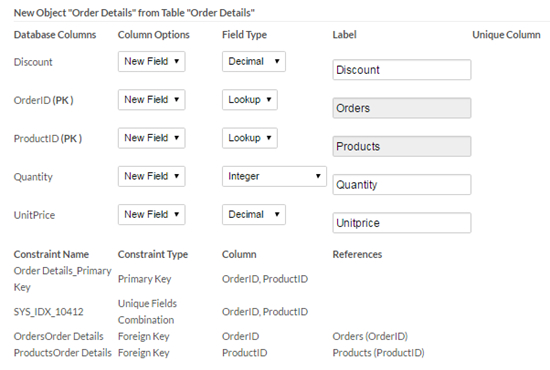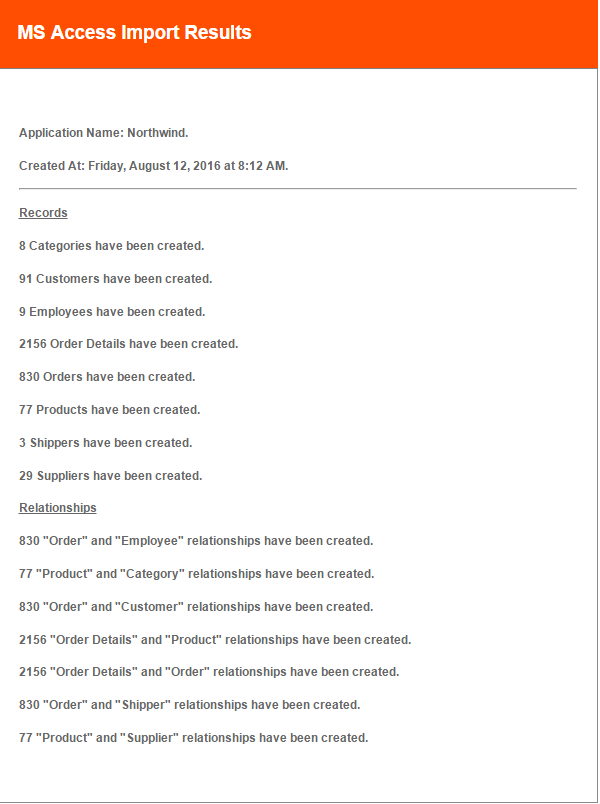Mapping fields and creating records
At this point, each selected database table has an associated Platform object. The next step is to tell Platform what to do with the tables' columns. For each column, you can choose from one of the following:
- Create a new Platform field. Use this option when mapping to a field where there is no existing field corresponding to the column in the Platform object.
- Map a column to an existing Platform field. Use this option when mapping to a field included with an attribute. For example, the Location attribute contains fields such as City, Country, and ZIP/Postal Code.
- Discard the column. Use this option if you do not want to include the column as a field in the object.
Platform reads the metadata from the database and automatically does the following:
- Marks fields that must have a unique value in the Unique Column column. These fields will include the Do not allow duplicate values in this field property.
- Creates a Unique Fields Combination trigger for each multi-column unique key in the database that includes all fields in the index.
- Creates relationships from foreign keys.
Note the following when mapping fields:
- By default, Platform derives the name of each field from the corresponding column name and puts that value in the Label column. You can edit the name. If you are mapping a column to an existing field, edit the name before selecting the field.
- Although the type for a new field is selected by default, you do not have to accept it. Sometimes a different type (Currency or Text Area) is more appropriate.
- Platform maps AutoNumber fields to Auto-Number fields and preserves the values from database rows.
- You can map Hyperlink fields to URL fields.
- You can map Attachment fields to File Upload or Image Upload fields. Platform only supports a single attachment; if a database row has an array of attachments, Platform uses only the first attachment from the array.
- You can map OLE objects to File Upload or Image Upload fields. Platform supports basic image types (JPG, GIF, PNG, TIFF, BMP), TXT, and ZIP files. Platform does not support Excel, PowerPoint, Word, or PDF files.
- Platform checks for the maximum number of fields allowed for each data type and you will get an error message when trying to save the mappings if any maximum is exceeded. You can then change data types and/or discard some columns from the affected tables.
It is always a good idea to double-check your mappings before proceeding with the data import.
The following screens show example mappings for the Customers and Order Details objects. Note the following about the mappings:
- Customer ID is marked as a Unique Column for the Customer object.
- Some columns are mapped to existing Location fields, such as City and Country..
- The Customer object has one column mapped to the Record Name field. Order Details, which is a dependent object with no tab, does not have a column mapped to the Record Name field.
- Information about each object's primary key is included at the bottom of each set of mappings. Because Order Details has a multi-column primary key, there will be a Unique Fields Combination trigger for that object.
- For the Order Details object, Platform automatically creates the relationships to the Order and Product objects based on foreign keys in the database.


When you are finished mapping fields, click Create Fields. Platform will create the fields as directed and import data from the database into object records. When the import is complete, Platform will send you an email:


